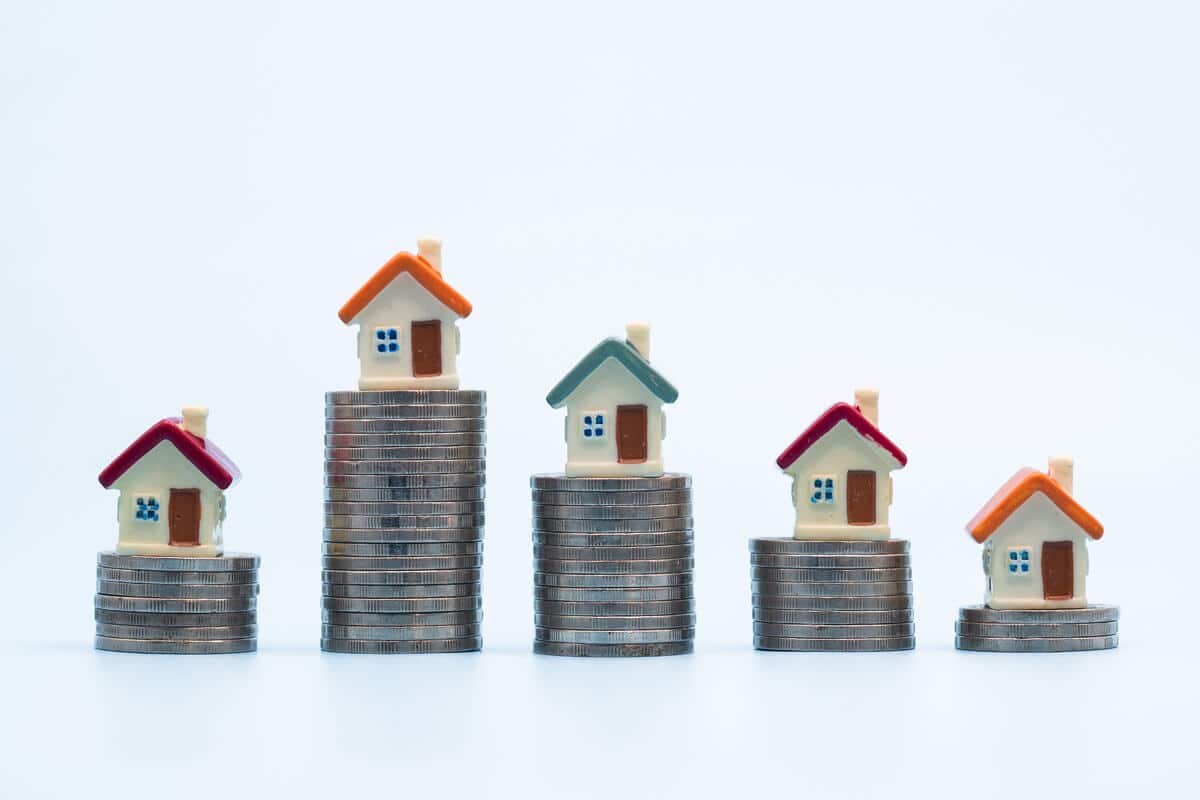How to Calculate ROI on a Pre-Construction Condo

I think we’ve all tried planting a seed. And of course, seeing a tree right away isn’t what we expect. It takes time, maybe a few years, but that’s the goal. We’re banking on growth, shade, and fruit down the road.
Investing in a pre-construction condo development, especially in Ontario’s ever-changing real estate market, works pretty much the same way. A solid investment, or, failure.
To avoid ending up with the latter, we have a guide, a compass to reach our destination safely: ROI, or return on investment. It’s the number that tells you whether your money is working as hard as you hoped, or if it’s just treading water.
Hi, my name is Jatin Gill, and in this post, I’ll explain what ROI is and show you how to calculate condo investment return.
Read: Pre-Construction Condos 101: A Beginner’s Guide
Understanding ROI for Pre-Construction Condos
Is this investment worth it? This is the question I hear most often when someone is weighing different developments to invest in. And that’s completely natural, after all, hard-earned money is on the line.
One of the simplest ways to answer this important question about pre-construction condo ROI is by looking at the numbers. They don’t lie. For that, there’s an umbrella term you need to know: ROI. It gives you a way to measure both future appreciation and ongoing rental income against what you’ve put in.
Capital Gains (Appreciation)
Simply put, this is your “future reward” for being patient. Technically, it means money made from the condo increasing in value over time. For condo ROI calculation, consider:
- Estimating Future Value
- Research historical appreciation rates: ~ 2 – 4% annual fluctuations in Toronto (2024–2025)
- Factor in future trends:
- Population growth (~1M new Ontario residents by 2030)
- New transit projects (Ontario Line, LRT)
- Emerging employment hubs (e.g., tech hubs in Waterloo region)
- Formula: Estimated Future Sale Price – Original Purchase Price
- Influencing Factors
- Location: High-demand areas like Toronto Waterfront or near transit hubs, Downtown
- Developer reputation: Proven track record for quality and timely delivery
- Unit specifics: Size, layout, floor level, and view
- Market conditions: Oversupply or interest rate fluctuations at closing
Read: Best Pre-Construction Condo Projects Near Toronto’s Transit Hubs

Rental Income (Cash Flow)
This is the cash flow factor: monthly income from tenants, minus the ongoing maintenance and operating costs to keep the property running.
- Estimating Rental Income
- Research comparable rents: e.g., 1-bedroom downtown Toronto, ~ $2,200 / month (500–600 sq ft, 2025)
- Consider unit size, number of bedrooms, and amenities like a gym or concierge service.
- Formula: [Monthly Rent × 12 × (1 – Vacancy Rate)] – Annual Rental Expenses
- Key Rental Expenses
- Property management: 8 -10% of rent (~$200–$240 / month)
- Vacancy rate: ~ 2 – 5% (1 month vacant every 12–24 months)
- Maintenance / repairs: ~ 0.5 – 0.75% of property value annually (~ $2,500 – $3,750 for a $500,000 condo)
- Tenant acquisition: ~ $100 – $200 per new tenant for ads or credit checks
Total Costs (The Hidden Variables)
Costs have a sneaky way of creeping in, quietly nibbling at your ROI: a small crack in a dam. Ignore it, and you’ll end up with a full-blown catastrophe.
- Initial Costs (Pre-Closing)
- Deposits: 15 – 25% of purchase price over 1 – 2 years (~$75,000–$125,000 for a $500,000 condo)
- Legal fees: ~ $1,500 – $2,500
- Mortgage broker fees: Often $0 (check with lender)
- Interim Occupancy Costs
- Occupancy fees: 0.5–1% of purchase price monthly (~$2,500–$5,000 for $500,000 condo)
- Interim property taxes: ~$500–$1,500/year
- Utilities: ~$100–$200/month if not included
Read: Everything You Should Know about Interim Occupancy in Canada
- Closing Costs
- Land Transfer Tax: Ontario + Toronto LTT (~ $8,000 – $10,000)
- Development levies: $5,000 – $30,000
- HST: 13% on new condos, with potential rebates
- Legal fees: ~ $1,500
- Utility hook-up: ~ $500 – $1,000
- Tarion warranty: ~ $500 – $1,500
- Adjustments: Pre-paid taxes or condo fees (~ $500 – $2,000)
Read: Buying Pre-Construction Condo in Ontario: Interim Occupancy vs Final Closing
- Ongoing Costs (Post-Closing)
- Mortgage payments: Principal + interest (~ 4.5 – 5% on $400,000 mortgage, ~ $2,200 – $2,400 / month for 25 years)
- Property taxes: ~ 1% of property value (~ $5,000 / year for $500,000)
- Condo fees: ~ $0.50 – $1.00 / sq ft / month (~ $300 – $600 for 600 sq ft)
- Home insurance: ~ $400 – $800 / year
- Utilities: ~ $150 – $250 / month if not included in condo fees
Pro tip: Always budget a little extra for unexpected costs.

Read: Your Guide to Condo Maintenance Fees
Step-by-Step Guide to Calculate Condo ROI
Calculating ROI on a pre-construction condo is like baking a cake. Ingredients and a recipe, are what you need. Then, mix everything in the right order, and follow financial “laws” (yes, they work just like Newton’s laws of physics), and the result is delicious. Make a mistake, and the cake is a flop.
- Calculate Total Investment
- Add up deposits, closing costs, and legal fees.
- This is your real starting line, not just the sticker price.
Pro tip: Track every dollar. Small fees add up faster than you’d expect.
Read: Buying Pre-Construction: What are Deposit Structures?
- Estimate Total Return
- Capital gains: Future sale price – original purchase price.
- Net rental income: (Total rental income – rental expenses) over the holding period.
Don’t count your chickens before they hatch.
- Apply the ROI Formula
- ROI = [(Capital Gains + Net Rental Income – Total Investment) ÷ Total Investment] × 100
- This is like a compass; it points the way to profit, or warns if you’re just spinning your wheels.
- Annualize ROI
- For multi-year investments (like a 5-year hold):
Annualized ROI = [(1 + Total ROI) ^ (1 ÷ Years)] – 1 - This evens the playing field, making it easier to compare projects with different timelines.
- For multi-year investments (like a 5-year hold):
- Test with an Example
- Purchase price: $500,000
- Deposits: 20% ($100,000)
- Closing costs: $20,000
- Appreciation: 2% annually → future value ~$563,000 in 5 years
- Rental income: $2,300/month, minus ~5% vacancy and $6,500 annual expenses
- Results:
- Total Investment = $120,000
- Capital Gains = $63,000
- Net Rental Income (5 years) = $98,750
- ROI = 34.79% over 5 years
- Annualized ROI ≈ 6.15%
Pro tip: Run your numbers with a “best-case” & a “worst-case” scenario. Markets move in cycles; what goes up can also come down.

Risks and Mitigation
Every investment has two sides: the shiny brochure and the fine print. With pre-construction condos, the rewards can be great. But the risks are real, too. Forewarned is forearmed!
- Market Volatility
- Supply and demand determine the final price. When there is oversupply, too many units hit the market, and prices hit a standstill!
- Interest rates climb, buyer enthusiasm fades!
- Mitigation: Keep an eye on market trends, spread your investments wisely, & don’t stretch your finances too thin.
- Construction Delays
- Extended interim occupancy is like being stuck on a treadmill: A ghost tenant situation, paying without reaping the benefits.
- Mitigation: Dig into their developers’ projects. Choose reputable developers.
Read: What to Do if Your Pre-Construction Condo Project Gets Delayed or Cancelled
- Liquidity Risks
- Don’t sell umbrellas on a sunny day!
- Mitigation: Buy in high-demand areas like Mississauga’s Square One or Hamilton’s core, where demand holds stronger.
- Unexpected Costs
- Development levies, HST surprises, or higher condo fees than expected.
- Mitigation: Budget a buffer (5–10% extra) for “unknowns.” Better safe than scrambling later.
Pro tip: Always read the fine print in your purchase agreement. Developers can pass certain costs onto buyers, and you don’t want a $10,000 surprise on closing day.
Tips for Maximizing ROI
The investing world needs one vital component: having a smart strategy. Being dependent on luck means losing a lot of money. Spot the opportunities early and make choices that stack the odds in your favour. Like playing chess.
- Pick high-growth locations
- New transit lines, tech hubs, or downtown revitalization (Toronto’s Waterfront, Kitchener’s tech corridor, Hamilton’s core) mean opportunity.
- The earlier you get in, the more you ride the wave.
- Negotiate flexible deposit schedules
- Spreading payments over 1 – 2 years helps with cash flow.
- Keeps your money working elsewhere instead of being locked away too soon.
- Secure mortgage rates early
- Locking in before rates rise can save thousands over time.
- A smart move when interest rates are unpredictable.
- Choose energy-efficient units
- Lower utility bills for you, higher appeal for tenants.
- A small feature that adds big value long-term.
- Explore assignment sales
- Selling your unit before final closing can unlock quick profits.
- Works best in hot markets with strong demand.
- Work with local experts
- Real estate agents and financial advisors who know Ontario’s market can spot red flags you might miss. A wise man learns from others’ mistakes, not his own.
Pro tip: Think like both an investor and a tenant. If you wouldn’t live there because of poor location, lack of amenities, or awkward layouts, chances are renters won’t line up either.

Bottom Line
“Maze” is the first impression that comes to mind every time I think about a pre-construction condo in North York, Vaughan, or other hot real estate markets in Ontario. They share many elements, turns, signs, and sometimes dead ends.
The solution? A compass, which in this case is ROI. It helps clear the path. There are factors to consider, like rental income and, of course, costs such as maintenance or interim occupancy. But, at the end of the day, it’s the numbers that don’t lie.
Need personalized guidance? At Platinum Condo Deals, we can guide you every step of the way. Contact us today and start making your investment work for you.
Jatin Gill, an esteemed authority in real estate writing, is celebrated globally for his unparalleled expertise. With over 20 years in the industry, he has authored more than 1,000 SEO-friendly articles covering every facet of real estate. Specializing in pre-construction projects, Jatin's extensive knowledge spans all real estate topics. His content is a go-to resource for anyone seeking comprehensive, insightful, and up-to-date information in the real estate market.
Learn MoreFAQs
ROI (Return on Investment) measures how much profit your condo investment generates compared to the money you put in.
It helps you evaluate profitability, compare projects, and make informed decisions instead of relying on guesswork.
Research comparable rentals in the area, account for unit size, amenities, and vacancy rates, then subtract expected expenses.
Deposits, closing costs, interim occupancy fees, mortgage payments, property taxes, condo fees, insurance, and maintenance.
Use the formula: Annualized ROI = [(1 + Total ROI)^(1 ÷ Years)] – 1, which lets you compare investments of different lengths.
Pick growth areas, negotiate flexible deposits, secure favourable mortgage rates, choose energy-efficient units, and work with local experts.
Additional Resources















Awards & Achievement










Subscribe for the Latest Condo Deals
Apologies, our subscription list for this month is now full. Please register on our website to secure your spot for next month. Thank you for your interest!

